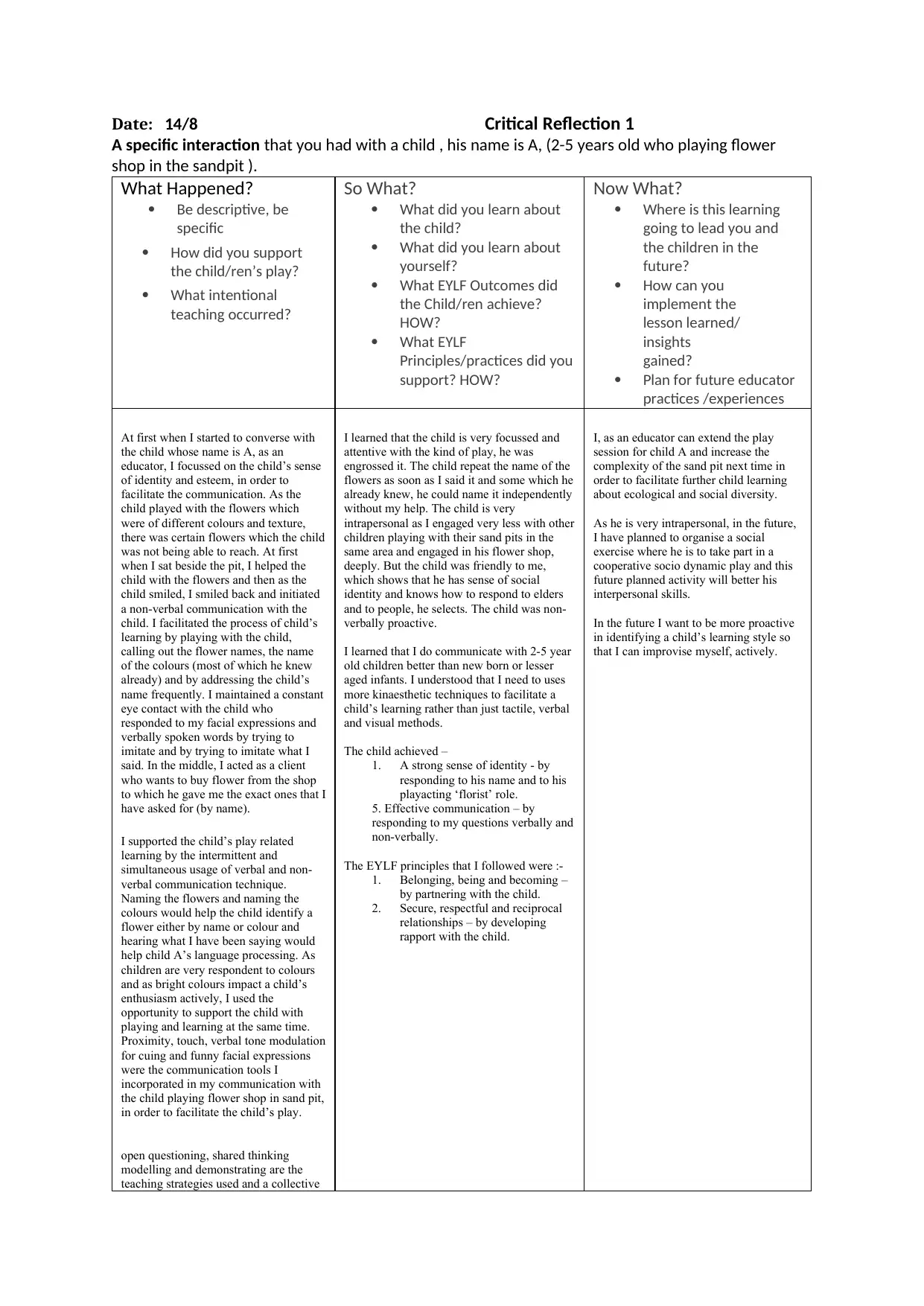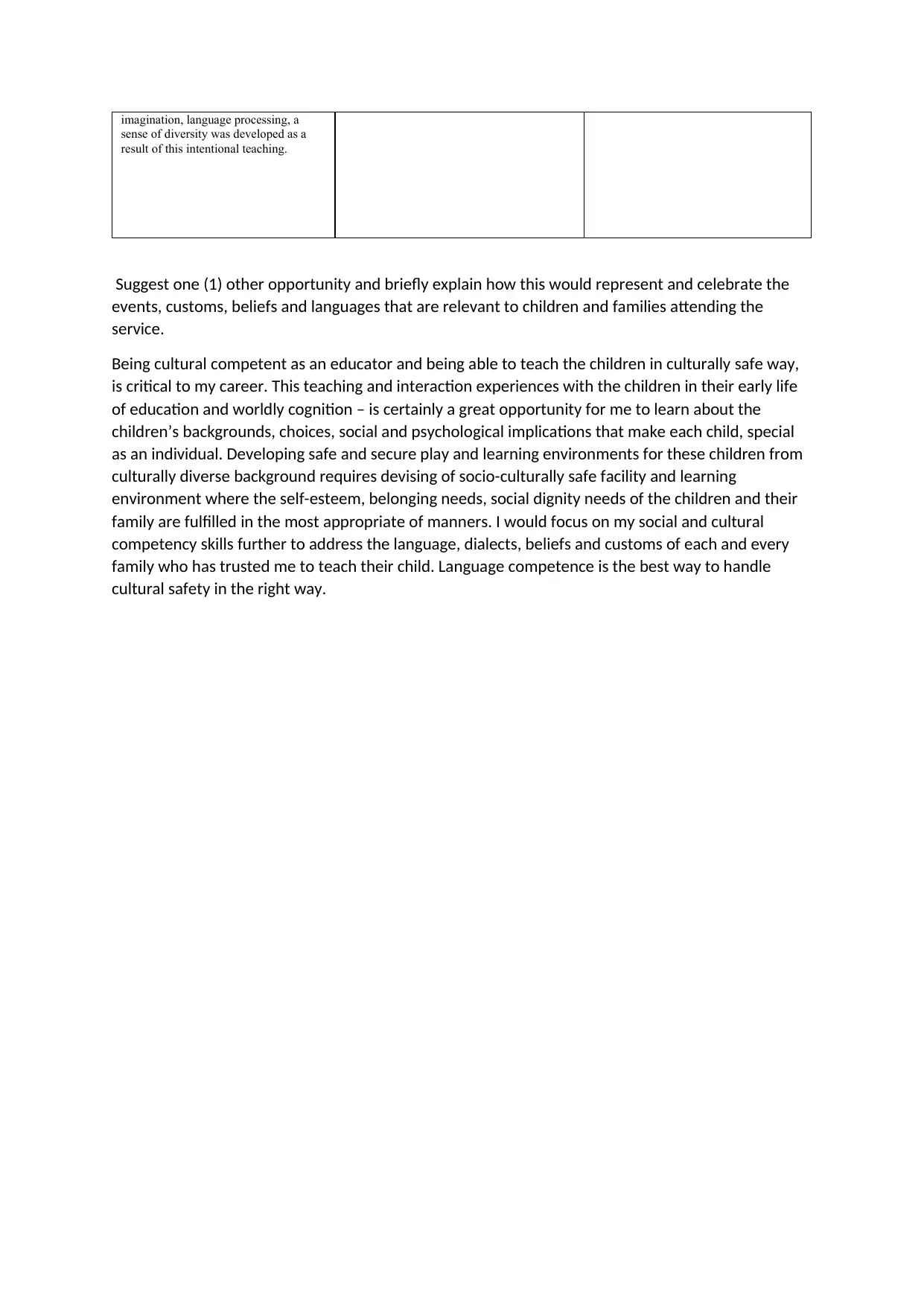Critical Reflection 1: Child Interaction, Teaching, and Learning
VerifiedAdded on 2022/09/18
|2
|1062
|26
Journal and Reflective Writing
AI Summary
This critical reflection analyzes a specific interaction between an educator and a 2-5 year old child named A during a flower shop play session in a sandpit. The educator describes the interaction, detailing how they supported the child's play through verbal and non-verbal communication, including naming flowers, colors, and using role-play. The reflection explores the intentional teaching that occurred, such as fostering language processing and a sense of identity. The educator learned about the child's focus, attentiveness, and intrapersonal nature, as well as their own communication strengths and areas for improvement. The child achieved EYLF outcomes related to identity and effective communication. The reflection also outlines the EYLF principles supported, including belonging, being, becoming, and secure, respectful relationships. The educator plans to extend the play session and incorporate social exercises to develop the child's interpersonal skills and improve their own teaching practices by identifying a child's learning style. The reflection concludes with a suggestion for celebrating cultural events, customs, beliefs, and languages within the service, emphasizing the importance of cultural competency and creating a safe and inclusive learning environment.
1 out of 2






![[object Object]](/_next/static/media/star-bottom.7253800d.svg)